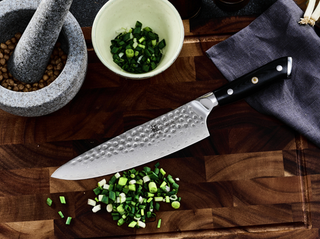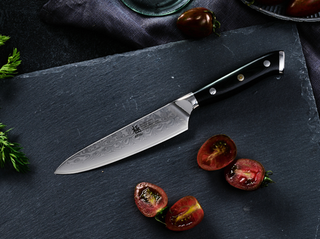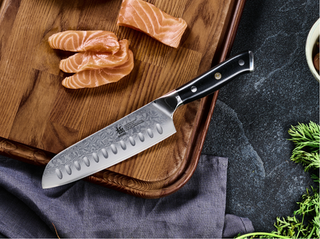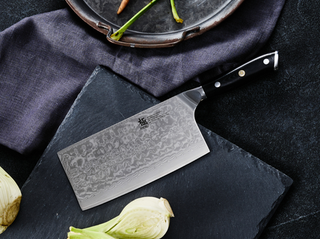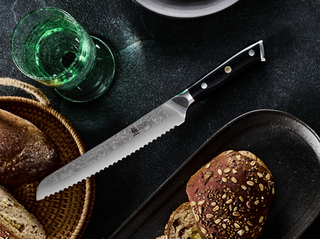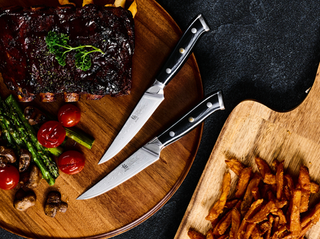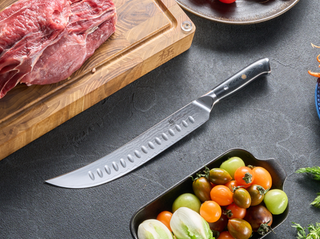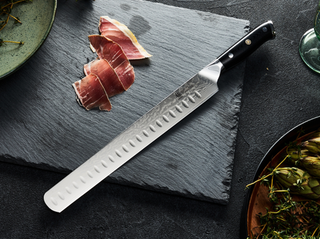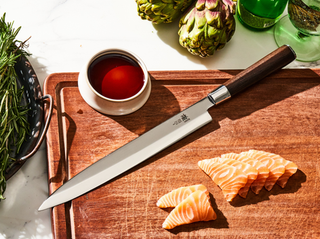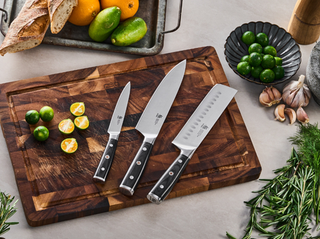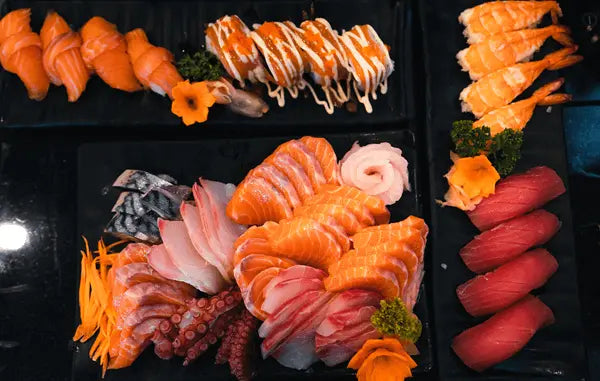What is Nigiri?
Nigiri is rice and fish together. The rice is formed into small mounds or balls. It is made sticky and spicy with a vinegar mixture. A slice of raw fish or seafood is placed on top of the rice. Some typical toppings are tuna, salmon, shrimp, and eel. The chef carefully cuts the fish to fit over the rice. Nigiri is bite-sized and easy to eat in one piece. A little wasabi is usually put between the rice and the fish. This adds a spicy flavor. Nigiri sushi is meant to be picked up with your fingers and dipped in soy sauce. The rice absorbs the sauce as you eat it. Good nigiri sushi balances the rice and the fish tastes good in one bite. It simply shows off the chef's skills.

What is sashimi?
Sashimi is a traditional Japanese dish in which raw fish and shellfish are thinly sliced and eaten raw. Sashimi uses fresh seafood and is typically sliced thinly with specially designed knives. It plays a particularly important role in Japanese cuisine, where freshness, quality of ingredients, cutting technique, and presentation all contribute to its deliciousness. Sashimi is served raw and is usually enjoyed with condiments such as soy sauce and wasabi.

10.5'' yanigiba slicer |Samurai Series|Kyoku knives
What is the difference between sashimi and nigiri?
The main difference between nigiri sushi and sashimi is in the way they are eaten and prepared.
Nigiri sushi is a type of sushi that combines vinegared rice with raw fish or shellfish. Sushi chefs shape the vinegared rice by hand and place the raw fish or shellfish on top. Nigiri sushi is typically bite-sized and eaten with soy sauce and wasabi as condiments. Each piece of nigiri contains a combination of vinegared rice and ingredients, creating a harmonious flavor experience in the mouth.
On the other hand, sashimi is a dish in which raw fish or shellfish are thinly sliced and served raw. Sashimi uses fresh seafood and is usually prepared with special knives to achieve thin slices. Because sashimi is served raw, the flavor and freshness of the ingredients are preserved.
Tips for Choosing Knives for Cutting Nigiri Sushi and Sashimi
The best type of knife for cutting nigiri sushi and sashimi is one that has the following characteristics:
- Sharpness and thinness: Because nigiri sushi and sashimi require thin slices, a knife with excellent sharpness and thinness is essential. A sharp knife can make smooth cuts on seafood, maintaining the integrity of the texture without damaging it.
- Flexibility: A sushi and sashimi knife should be flexible enough to avoid bones and tough parts of the fish while still being able to cut through soft flesh. This flexibility allows for precise and clean cuts without damaging the flesh of the fish.
- Length and balance: Sushi and sashimi knives tend to have longer blades. The length is advantageous when slicing larger fish in a single stroke. In addition, the balance of the knife is critical for improved handling and maneuverability.
What Are the Best Knives for Preparing Nigiri and Sashimi?
10.5" Yanagiba knife
The10.5 inch yanagiba knife will instantly become a natural extension of you and your skills. Thanks to its scalpel like 11-13 degree edge, this knife slices with minimal resistance, making it ideal for slicing through fish to prepare sashimi, sushi, and more with meticulously exact precision. The Japanese high-carbon steel construction provides unrivaled performance, superior corrosion resistance, and exceptional edge retention to suit any amateur or professional sushi chef. Its wenge wood handle offers comfort and perfect balance, preventing fatigue and cramping even when handling reunions, housewarmings, showers, and more. This beautiful piece of kitchen equipment comes complete with its own sheath and case to preserve and store it with care.

7" Santoku knife
This elegant Japanese Santoku knife delivers precise cuts with its scalpel-sharp edge and durable Damascus steel blade. The shorter blade and handle provide perfect balance for effortless precision tasks like filleting salmon or tuna for sushi and sashimi. A stylish addition to any kitchen.

Detailed Eating Etiquette and Techniques for Nigiri and Sashimi
1. Order of Eating
-
When eating sushi or sashimi, it is recommended to start with lighter-flavored fish such as white fish, then gradually move to richer flavors like tuna or salmon, and finish with sushi rolls. This helps you better appreciate the original taste of each ingredient.
2. Proper Way to Dip in Soy Sauce
-
Nigiri: When dipping in soy sauce, dip the fish side, not the rice, to prevent the rice from falling apart and absorbing too much soy sauce, which would overpower the flavor.
-
Sashimi: Use chopsticks to pick up the slices and dip them lightly in soy sauce. Avoid soaking the fish for too long.
3. Use of Wasabi and Condiments
-
Traditionally, the sushi chef places wasabi between the rice and fish in Nigiri. If you want more wasabi, take a small amount and apply it to the fish before dipping, but avoid mixing wasabi directly into the soy sauce as it can destroy the original flavor.
-
For sashimi, you can add a small amount of wasabi to taste and eat it together with pickled ginger to cleanse the palate and enhance the aroma.
4. Using Hands or Chopsticks
-
Nigiri can be eaten either with your hands or with chopsticks. Using hands is traditional and helps maintain the sushi’s shape better. Sashimi should be eaten with chopsticks.
5. Eat in One Bite
-
It is recommended to eat Nigiri and Sashimi in one bite to fully experience the blend of flavors and textures.
6. Purpose of Pickled Ginger
-
Pickled ginger is served as a palate cleanser to be eaten between different types of fish, not to be eaten together with the sushi or sashimi.
7. Respect for the Sushi Chef
-
In high-end sushi restaurants, avoid adding too many extra condiments or asking to alter the sushi, as this can be seen as disrespectful to the chef’s craftsmanship.
-
It is polite to express gratitude to the sushi chef after finishing your meal.
8. Tips and Taboos
-
Do not stick chopsticks vertically into the rice or Nigiri, as this resembles a funeral ritual and is considered very rude in Japanese culture.
-
Do not dismantle or separate the sushi after taking a bite — this is also seen as impolite.
-
Try to keep pace with others at the table and avoid rushing the meal.
These detailed etiquette and techniques will help you enjoy Nigiri and Sashimi in a way that respects Japanese culture, shows good manners, and enhances your tasting experience.
Frequently Asked Questions
What are the health benefits of eating nigiri sushi?
Nigiri sushi, made with fresh and high-quality ingredients, can provide several health benefits. The raw fish or seafood toppings in nigiri sushi provide a nutrient-rich source of high-quality protein, omega-3 fatty acids, vitamins, and minerals. These nutrients support heart health, brain function, and overall well-being. Nigiri sushi, when made with lean fish, can be a low-fat, low-calorie option that helps with portion control. In addition, the seafood used in nigiri sushi provides minerals such as iron, zinc, magnesium, and calcium. Some fish used in nigiri sushi contain antioxidants, which help protect cells from damage.
How is nigiri sushi different from other types of sushi?
Nigiri sushi differs from other types of sushi in its emphasis on simplicity and balance. It consists of a small, hand-formed mound of vinegared rice topped with a slice of fresh raw fish or seafood. The emphasis is on the quality of the ingredients, allowing the natural flavors to shine. Nigiri sushi is bite-sized and minimalist, while other types of sushi, such as maki rolls, contain a combination of ingredients and have more complex flavor profiles. Nigiri sushi features raw fish or seafood toppings and usually contains minimal condiments, distinguishing it from other sushi styles.
Is it safe to eat raw fish in nigiri sushi?
When handled and sourced properly, raw fish in nigiri sushi can be safe to eat. It is important to prioritize freshness and choose high-quality fish from reputable sources. Look for sushi-grade fish that has been handled and processed for raw consumption. Proper hygiene, including clean utensils and surfaces, is essential when preparing sushi. In addition, maintaining proper storage temperatures and considering individual health conditions are important factors. While there are inherent risks associated with eating raw fish, following food safety guidelines and using reliable sources can help minimize these risks.
